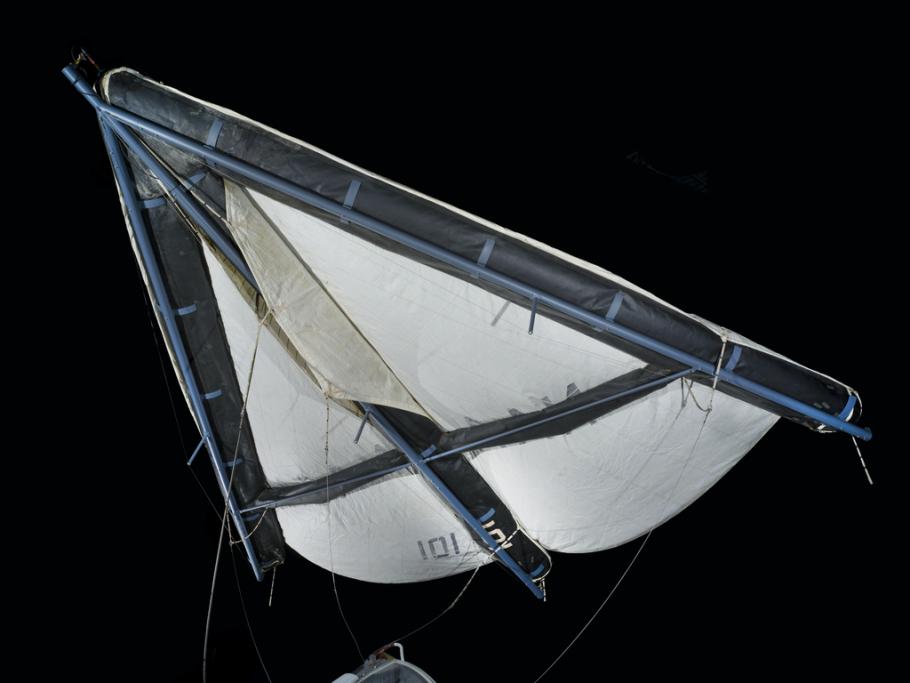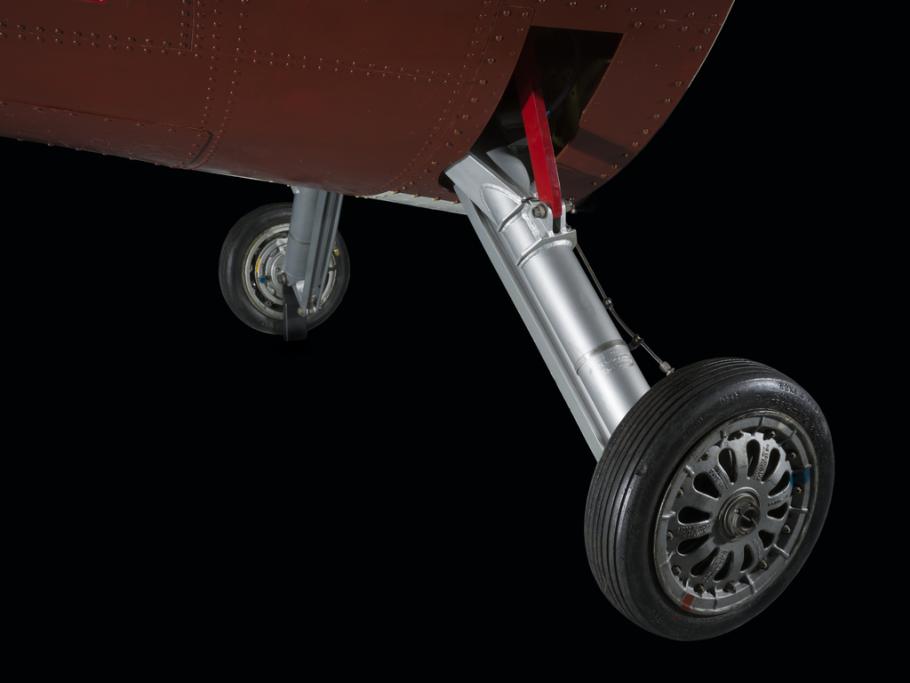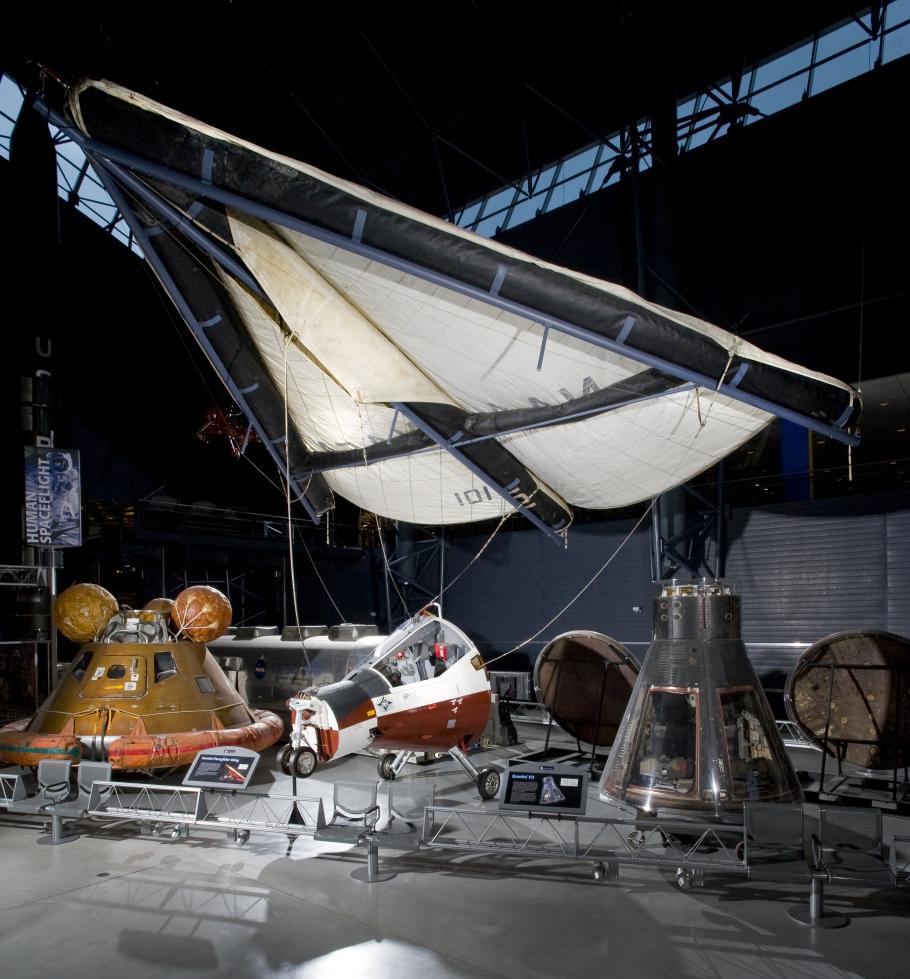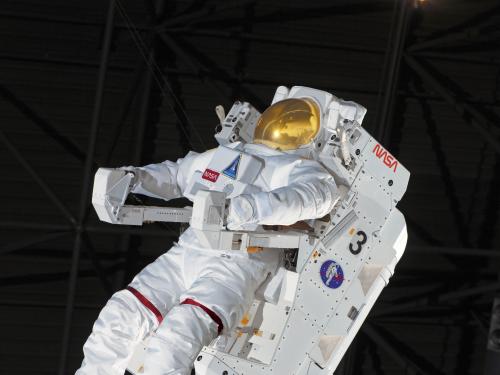17 Images
At the start of the Gemini program in 1961, NASA considered having the two-man Gemini capsule land on a runway after its return from space, rather than parachute into the ocean. This controlled descent and landing was to be accomplished by deploying an inflatable paraglider wing of the type invented by Francis Rogallo and NASA's Langley Research Center. Although never used to recover a manned spacecraft, the Paraglider Landing System Program proved useful in developing alternate landing techniques.
This full-scale, manned Test Tow Vehicle (TTV) was built to test the Gemini paraglider wing in flight. It served as the first of two TTVs flown to perfect maneuvering, control, and landing techniques. Eight times a helicopter released the TTV, wings deployed, over the dry lake bed at Edwards Air Force Base, where it landed.
NASA transferred the TTV-1 to the Smithsonian in 1975.
Display Status
This object is on display in Human Spaceflight at the Steven F. Udvar-Hazy Center in Chantilly, VA.
Object Details
Country of Origin
United States of America
Type
SPACECRAFT-Crewed-Test Vehicles
Manufacturer
North American Aviation Inc.
Dimensions
Overall: 115 × 92 3/8 in., 4300lb., 304.8cm (292.1 × 234.6cm, 1950.5kg, 10 ft.)
Other (wheel to wheel): 92 in. (233.7cm)
Other (capsule): 103 7/8 in. (263.8cm)
Materials
Steel
Alternate Name
Gemini TTV-1 Paraglider Capsule
Inventory Number
A19750833000
Credit Line
Transferred from the National Aeronautics and Space Administration
Data Source
National Air and Space Museum
Restrictions & Rights
Usage conditions apply
For more information, visit the Smithsonians Terms of Use.





















